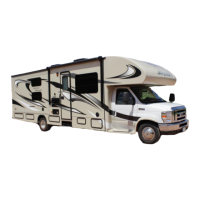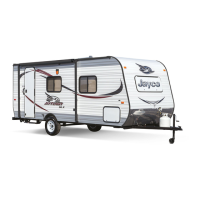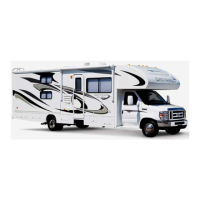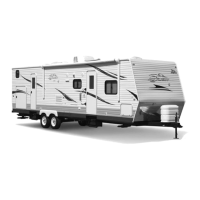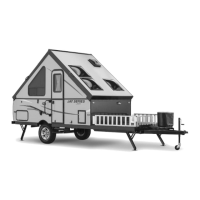8-15
10. Close the hot water lines and repeat with the cold water lines on the faucets.
11. Let the solution remain in the system for at least four hours when disinfecting
with 50 PPM residual chlorine. If a shorter time period is desired, then a 100
PPM chlorine concentration should be permitted to sit in the system for at
least one hour.
12. After the required period, drain the chlorine solution from the fresh water
system (see Draining the fresh water system). Some solution may remain
in the water heater and will be flushed in the following steps:
13. Fill the fresh water system using clean (potable) water (see Fresh water
connections) completely full.
14. Then, drain the fresh water system (see Draining the fresh water system).
NOTE: If a chlorine taste lingers in the water, flush the water system with
a solution consisting of one-quart vinegar to five gallons of clean water. Re-
flush as necessary.
Winterization
Preparing your motor home for colder weather or storage is very important for
most states and Canada. Failure to prepare your motor home may cause water
supply lines and the water heater to freeze.
No commodity or product should be added to the fresh water system to ensure
freeze protection other than RV antifreeze.
The motor home should be winterized at the end of the camping season or when
the motor home will be exposed to temperatures that will fall at or below 32°F
(0°C). Repairs due to freezing are not covered by warranty.
There are two methods of winterizing your motor home based upon your model.
Please read, understand and follow all instructions before beginning.
Air pressure
This method will utilize an air hose to blow excess water from the water lines.
1. Make sure all holding tanks are empty and drain valves OPEN.
2. Run the water pump until it is dry, this will take approximately 15-20 seconds.
3. OPEN all faucets and drains, and the toilet.
4. Using an air hose and adapter (customer supplied), blow air through the city
water connection. Any remaining water will blow out in five to ten minutes.
Pour one cup of non-toxic RV antifreeze into all drain P-traps.
Antifreeze method
It may be easier to winterize the motor home with another person to assist you.
Automotive antifreeze (ethylene glycol) and windshield washer antifreeze
(methanol) are poisonous. Never use these products in your fresh water
system. These products are harmful and may be fatal if swallowed

